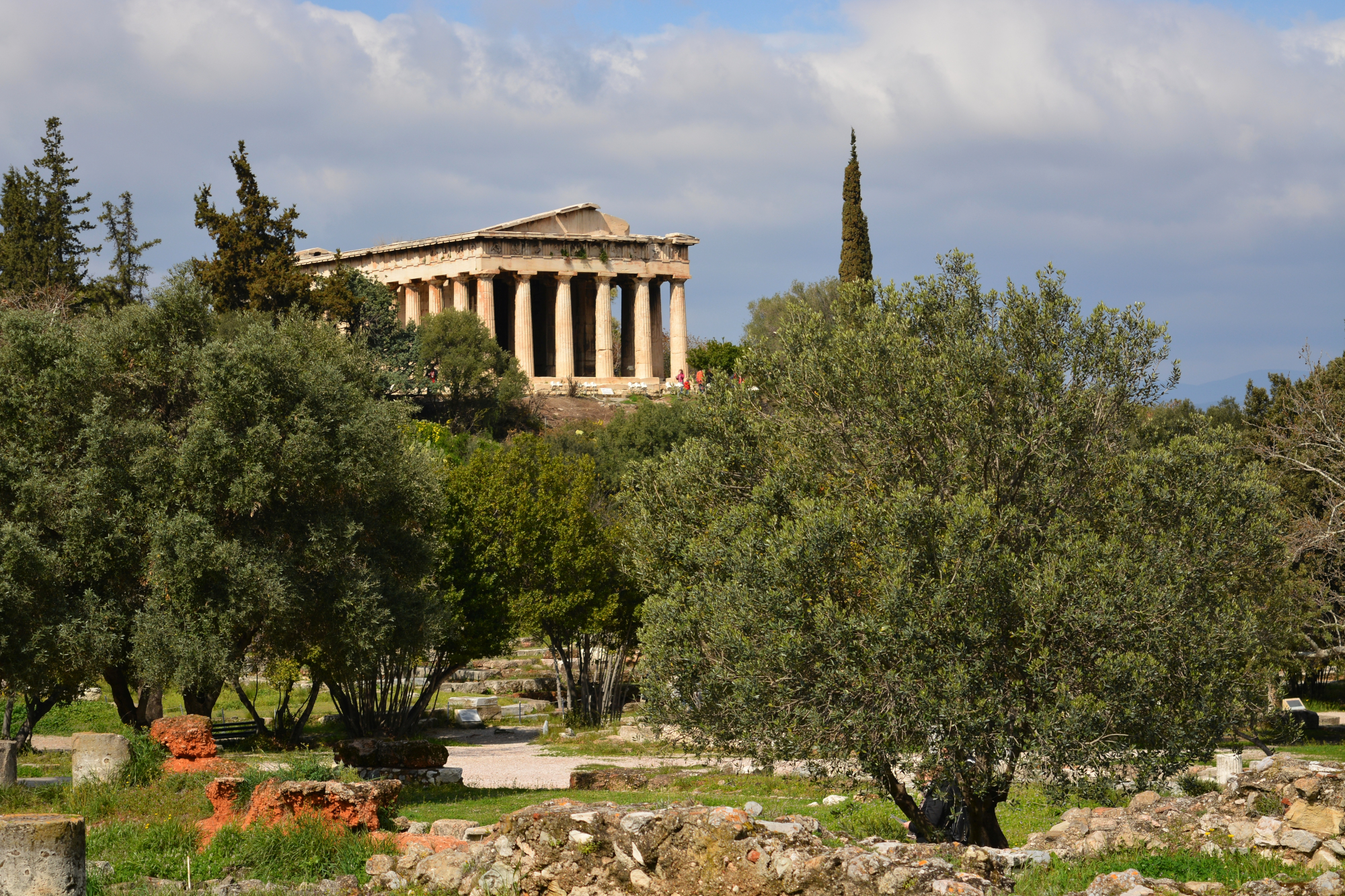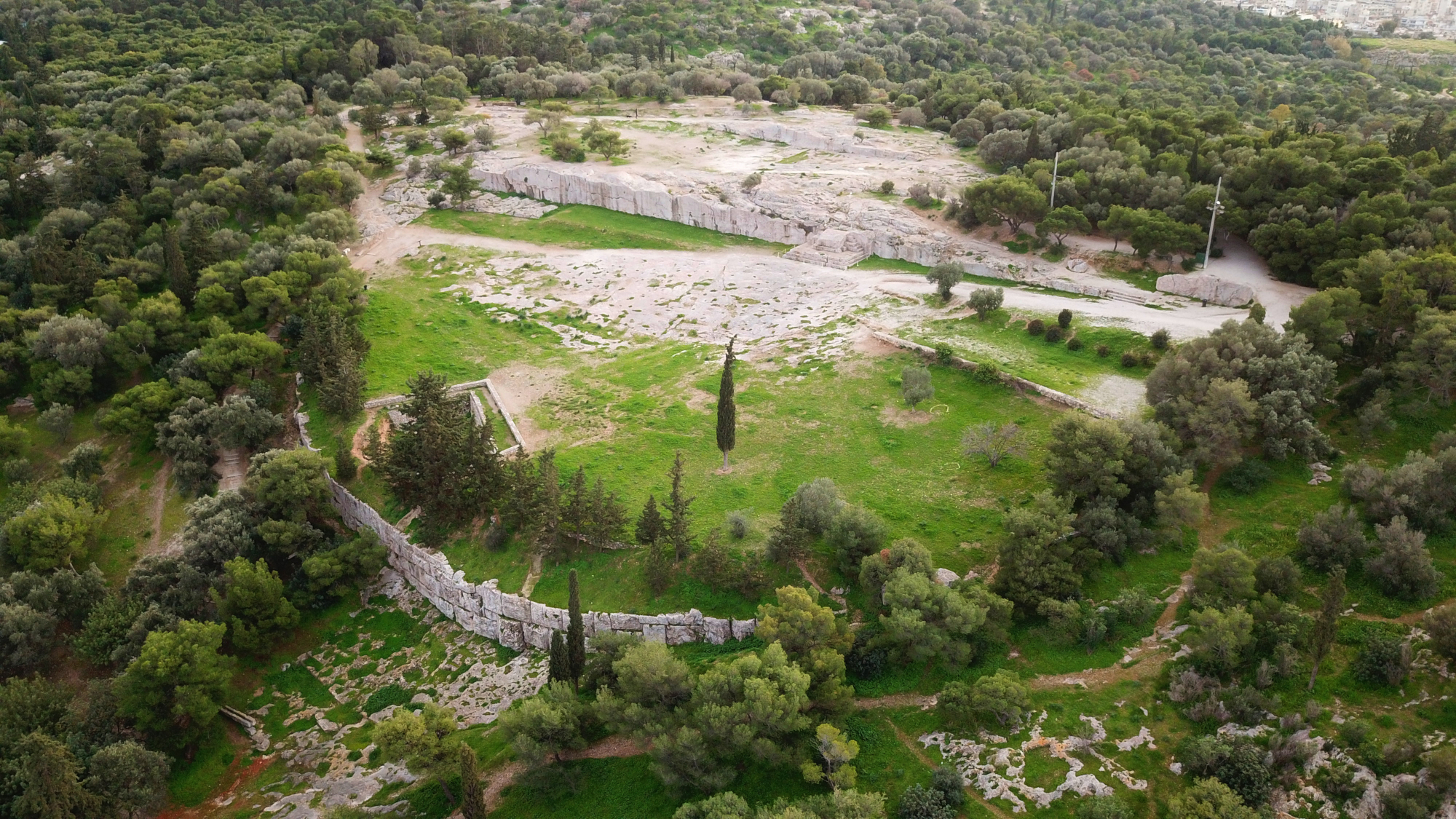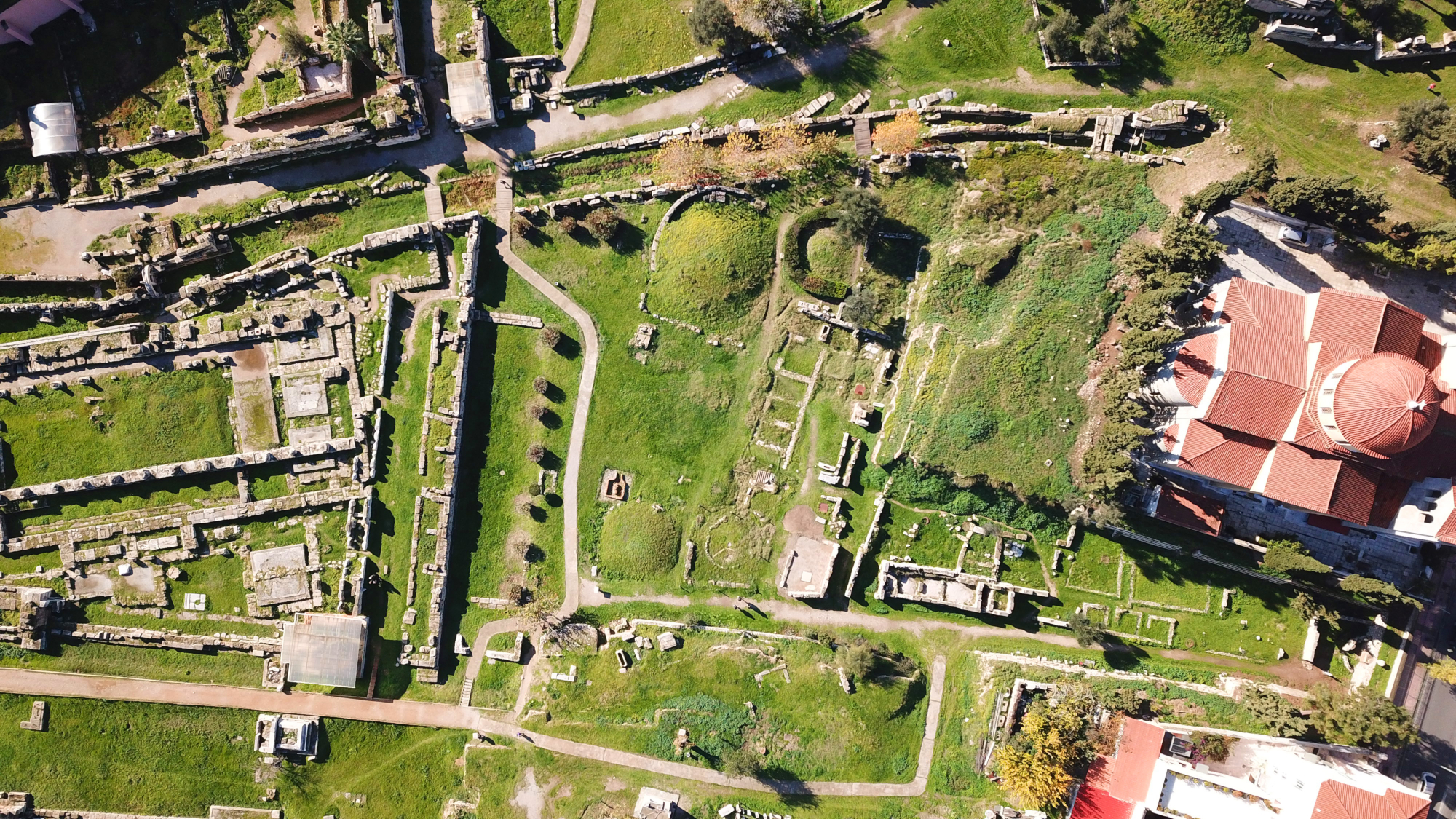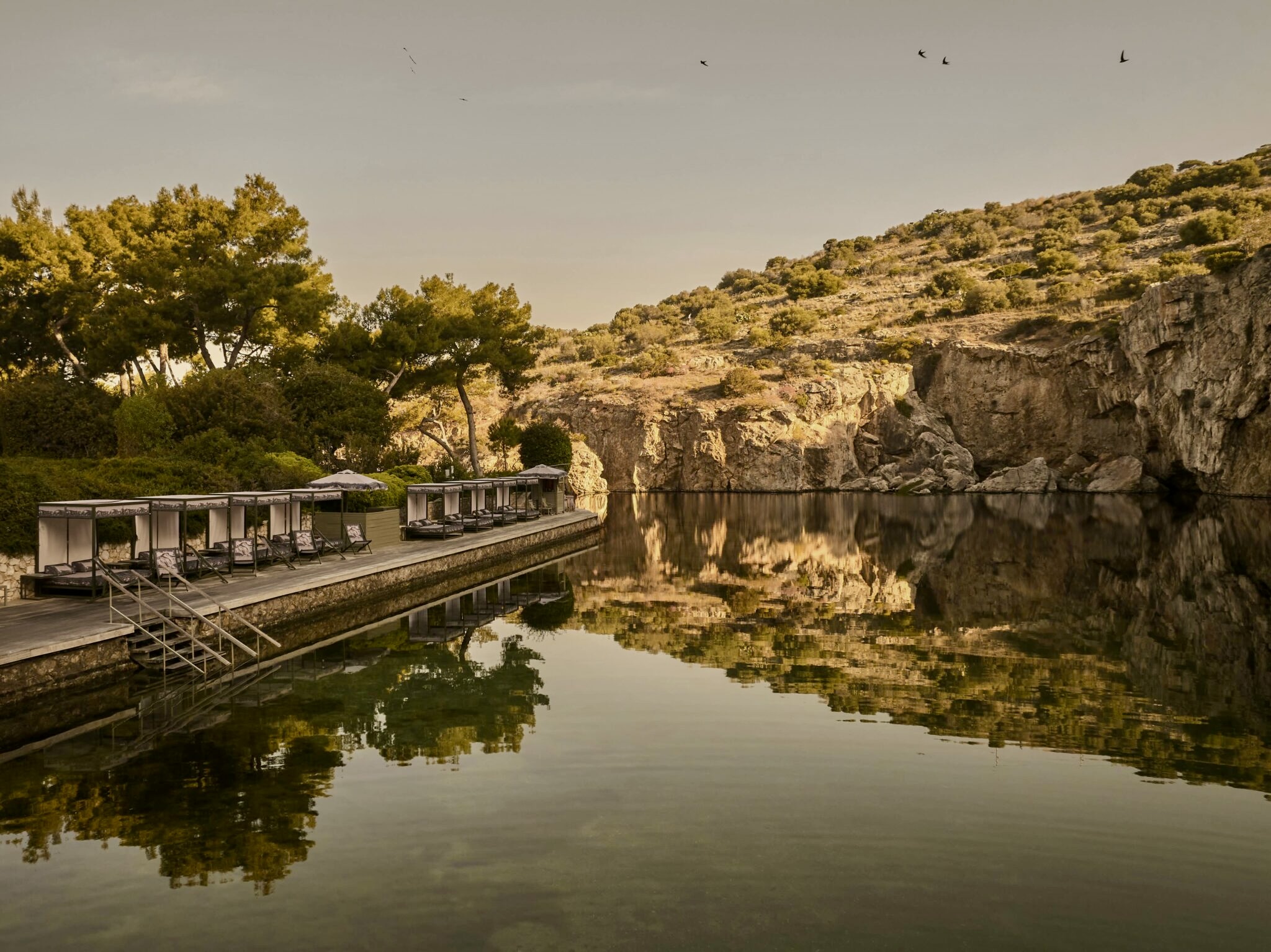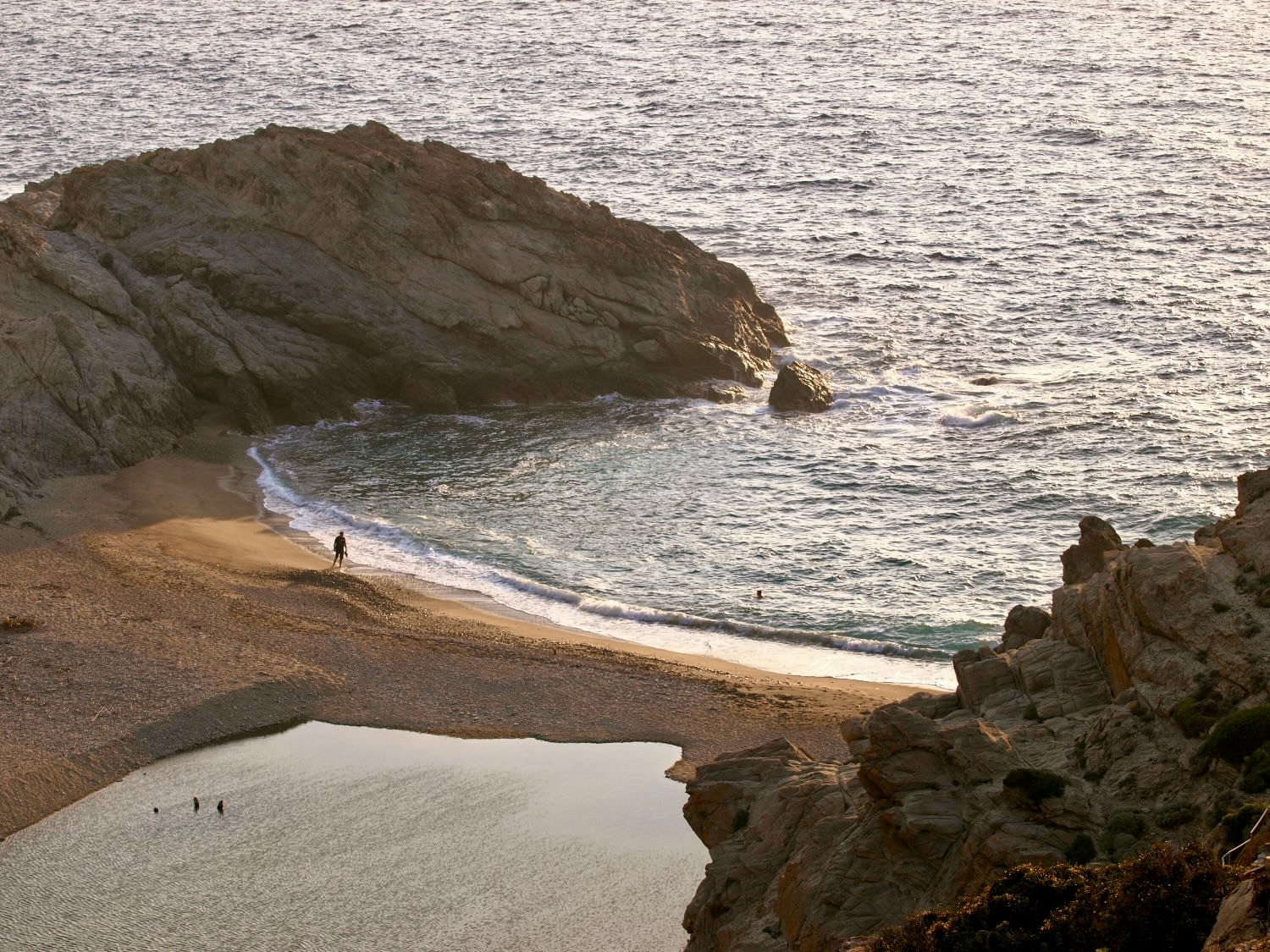Three major archaeological sites in central Athens serve as an ideal basis for enjoyable walks over long and short distances, amidst trees and creeks, as well as on hills with marvellous views, for direct contact with the tremendous history offered by Athens, a safe, appealing and multifaceted city promising an unforgettable holiday experience throughout the year.
Ancient Agora
At the northwestern foot of the Acropolis Hill, the Ancient Agora served as the centre of ancient Athens over approximately four centuries. Some of the most prominent public buildings and sanctuaries were built in this area, pivotal for the development of the city’s administrative, political, judicial, social and religious identity. A walk through the tree-filled Ancient Agora, from the Stoa of Attalos, to the Agoraios Kolonos, the hill next to the Agora hosting the Temple of Hephaestus, as well as towards the Agion Apostolon Byzantine-era chapel, all brings to mind images of the Ancient Agora at its height, when ancient Athenians would assemble at the location to decide on public affairs and prepare religious celebrations. Settle at a shady bench and take in the extensive history of the city. A walk at the Ancient Agora is magical. The Altar of the Twelve Gods was located at the agora’s northwest corner, while the city’s most significant administrative buildings and sanctuaries were built on the western side. Amongst other things, visitors may see the ruins of the Tholos, the seat of fifty administrative deputies; the impressive 5th century BC Temple of Hephaestus, one of Greece’s best-preserved temples; the Bouleuterion, or assembly house; as well as the Odeon of Agrippa, which was a luxury, two-storey building initially planned to host musical events. The Ancient Agora also hosts the Museum of the Ancient Agora at the restored Stoa of Attalos, from the 2nd century BC. The Stoa served as a meeting place and commercial hub with 21 stores.
Ancient Agora, open daily 08:00-17:00, 24 Adrianou, +30 2103210185, odysseus.culture.gr/
Museum of the Ancient Agora, open Wed-Mon, 08:00-17:00, Tue, 10:00-17:00
Pnyx
The Pnyx is situated between the Hill of the Nymphs (National Observatory) and the Hill of the Muses (Filopappou). A walk around this cluster of three small hills, west of the Acropolis, is delightful and filled with archaeological interest. The Pnyx is where ancient Athenians gathered to host their popular assemblies between the 6th and 4th centuries BC. The location includes ruins of a speaker’s platform and steps carved into a rock. The foundations of two long stoas at the south side that were never completed and had been planned to offer protection from adverse weather conditions feature as important monuments at the Pnyx. Another important monument, Philopappos, dated between 114-116 AD, was built by the Athenians in honour of the great benefactor of the city, the exiled price of Commagene, Julius Antiochus Philopappos. The monument measures 9.80 x 9.30 metres, is built of white Pentelic marble on a socle 3.08 metres high. It contained a burial chamber and its façade featured lavish architectural decoration. The importance and history of the Pnyx, however, does not end in pre-Christian times, as this is the location where the transition from polytheism to Christianity took place. According to the New Testament, the Apostle Paul, in 51 AD, delivered his speech here to the Athenians, even managing to convert to Christianity the Athenian judge Dionysius the Areopagite, who later became bishop of the city. Filopappou hill is also believed to be the location of Socrates’ prison cell, a cave, according to the writings of Plato and Xenophon. However, apart from this Filopappou hill cave, other caves located at the three hills, including one opposite the Agios Demetrios Loumpardiaris church, also claim this piece of history. Entering the caves at the three hills is not permitted but visitors can look through the bars at their mouths. It should also be noted that some of the most important politicians and generals of ancient Greece delivered speeches at the Pnyx including Themistocles, Aristides, Pericles, Demosthenes, and, in the modern era, Theodoros Kolokotronis, a general and pre-eminent leader of the Greek War of Independence (1821-1829), on October 8, 1838.
Kerameikos
The Kerameikos archaeological site nowadays covers approximately 4.5 hectares and represents a small part of the ancient Deme of Kerameon – known today as Kerameikos – one of the largest demes of ancient Athens. As suggested by its name, the area was a base for potters and vase painters due to its clay soil and small Eridanus river, which still flows among the ancient ruins. Most ceramic pieces produced in ancient Athens hailed from this area. However, this riverside area flooded frequently, which made living conditions difficult in the area. It was gradually converted into a burial ground, becoming ancient Athens’ most important cemetery. Some of the most significant monuments to be encountered while walking around the Kerameikos archaeological site include: a section of the Themistoclean Wall, which divided Kerameikos into inner and outer areas; the Dipylon Gate, the main gate in the city wall of Classical Athens leading to the Plato Academy and also the starting point for the procession of the Panathenaic festival; as well as the Sacred Gate, the starting point of Iera Odos, the Sacred Way stretching from Athens to Eleusis in the west and part of the route covered by the procession for the Eleusinian Mysteries, initiations held for the cult of Demeter and Persephone. The Kerameikos archaeological site also hosts the ruins of the Pompeion, an important public building during the Classical period; the burial enclosure of the Stele of Hegeso; the Demosion Sema, or Public Cemetery; and other well-known monuments. The Demosion Sema – located just beyond the Dipylon, the largest and most formal Athenian gate – is where prominent Athenians were laid to rest along with fallen war heroes, and also the location from which statesman Pericles delivered his famous Funeral Oration for the dead of the Peloponnesian War in 430 BC. The site also hosts the Kerameikos Museum, exhibiting mostly burial-related artefacts from excavations at Kerameikos.
Kerameikos archaeological site open daily 08:00-17:00, 148 Ermou, +30 2103463552 odysseus.culture.gr;
Kerameikos Museum, Wed-Mon 08:00-17:00, Tue 10:00-17:00



